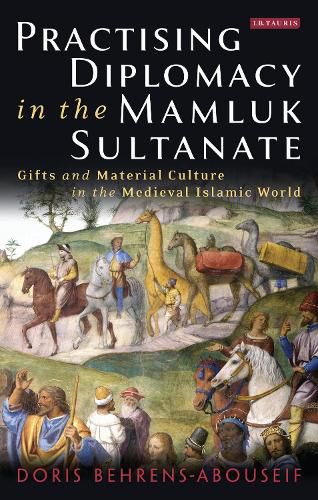Readings Newsletter
Become a Readings Member to make your shopping experience even easier.
Sign in or sign up for free!
You’re not far away from qualifying for FREE standard shipping within Australia
You’ve qualified for FREE standard shipping within Australia
The cart is loading…






Elaborate and sensational gifts were the hallmark of Mamluk diplomacy. From Cairo, where they controlled the medieval spice trade and the holy sites of Christianity and Islam, the Mamluk Sultans-conscious of their humble slave origins-augmented their claims to legitimacy through brilliant displays of diplomatic gift-giving, creating a celebrated reputation for the Sultanate from Europe to the Far East. From spices, ceremonial textiles, and military objects, to elephants and giraffes, and even humans-either living or as severed heads. The offerings varied in combination and emphasis according to the status and circumstances of giver and receiver, but always created a sensation. Through an unparalleled study of primary sources and rigorous fieldwork, this original book-richly illustrated in colour-explores the unpredictable and nuanced art of the regal gift in the Mamluk Sultanate from 1250-1517. Doris Behrens-Abouseif not only provides the first study of this subject, but makes an important contribution to the study of diplomacy, economics, visual arts, and material culture in the medieval period.
$9.00 standard shipping within Australia
FREE standard shipping within Australia for orders over $100.00
Express & International shipping calculated at checkout
Elaborate and sensational gifts were the hallmark of Mamluk diplomacy. From Cairo, where they controlled the medieval spice trade and the holy sites of Christianity and Islam, the Mamluk Sultans-conscious of their humble slave origins-augmented their claims to legitimacy through brilliant displays of diplomatic gift-giving, creating a celebrated reputation for the Sultanate from Europe to the Far East. From spices, ceremonial textiles, and military objects, to elephants and giraffes, and even humans-either living or as severed heads. The offerings varied in combination and emphasis according to the status and circumstances of giver and receiver, but always created a sensation. Through an unparalleled study of primary sources and rigorous fieldwork, this original book-richly illustrated in colour-explores the unpredictable and nuanced art of the regal gift in the Mamluk Sultanate from 1250-1517. Doris Behrens-Abouseif not only provides the first study of this subject, but makes an important contribution to the study of diplomacy, economics, visual arts, and material culture in the medieval period.